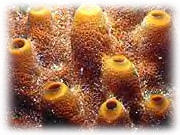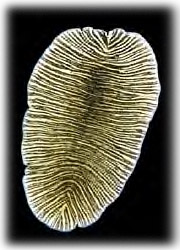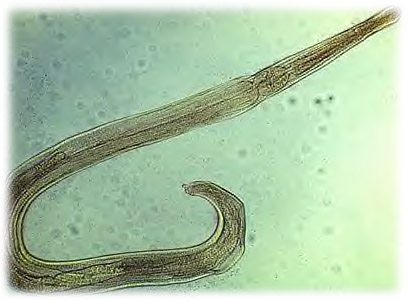| Porifera | Cnidaria | Platyhelminthes | Nematoda | |
| Representative Animal |

Sponge |

Jellyfish |

Flatworm |

Roundworm |
| Symmetry | None | Radial | Bilateral | Bilateral |
| Body Plan | N/A | N/A | Acoelomate | Pseudocoelomate |
| Digestive System | Filter-feed water by drawing water through pores; amoebocytes take up food from choanocytes, digest it, and carry nutrients to other cells | Gastrodermis (inner layer) secretes enzymes into the gastrovascular cavity; gastrodermal cells engulf small pieces of partially digested food by phagocytosis; digestion is completed in cells within food vacuoles | Gastrovascular cavity with single opening planarians: digestive juices spilled unto prey; pharynx sucks small pieces of food into gastrovascular cavity, where digestion continues; digestion is completed within the cells lining the gastrovascular cavity cestoda: lack digestive system; food predigested by host | Complete digestive tract |
| Transport Inside Body | Flagellated choanocytes (collar cells) lining inside body generate a water current; collars trap food particles and ingest them by phagocytosis | Bundles of miscorfilaments arranged into contractile fibers | Branching of gastrovascular cavity | Pseudocoelom with its fluid transports serves as blood vascular system that transports nutrients throughout body |
| Gas Exchange | Cells directly with water | Cells directly with water | Planarians: lack organs specialized for gas exchange; | In contact with water |
| Waste Disposal | Through osculum | Undigested remains are egested through the mouth/anus | Planarians: flame cells waft fluid through branched ducts opening to outside | Through anus |
| Nervous System | None | Noncentralized nerve net is associated with simple sensory receptors distributed radially around body | Planarians: near main sources of sensory output is a pair of ganglia (dense cluster of nerve cells) from which a pair of ventral nerve chords run length of body | Nervous system exists |
| Reproduction | Asexual | Alternation of asexual polyps and sexual medusas | Planarians: sexual and asexual (regeneration)
Flukes: alternation of sexual and asexual stages |
Usually sexual |
| Distinguishing Feature | Least complex of all animals | Basic body plan has two variations: the sessile polyp and the floating medusa | Bodies are generally flattened dorsoventrally | Cylindrical shape with tapered ends |